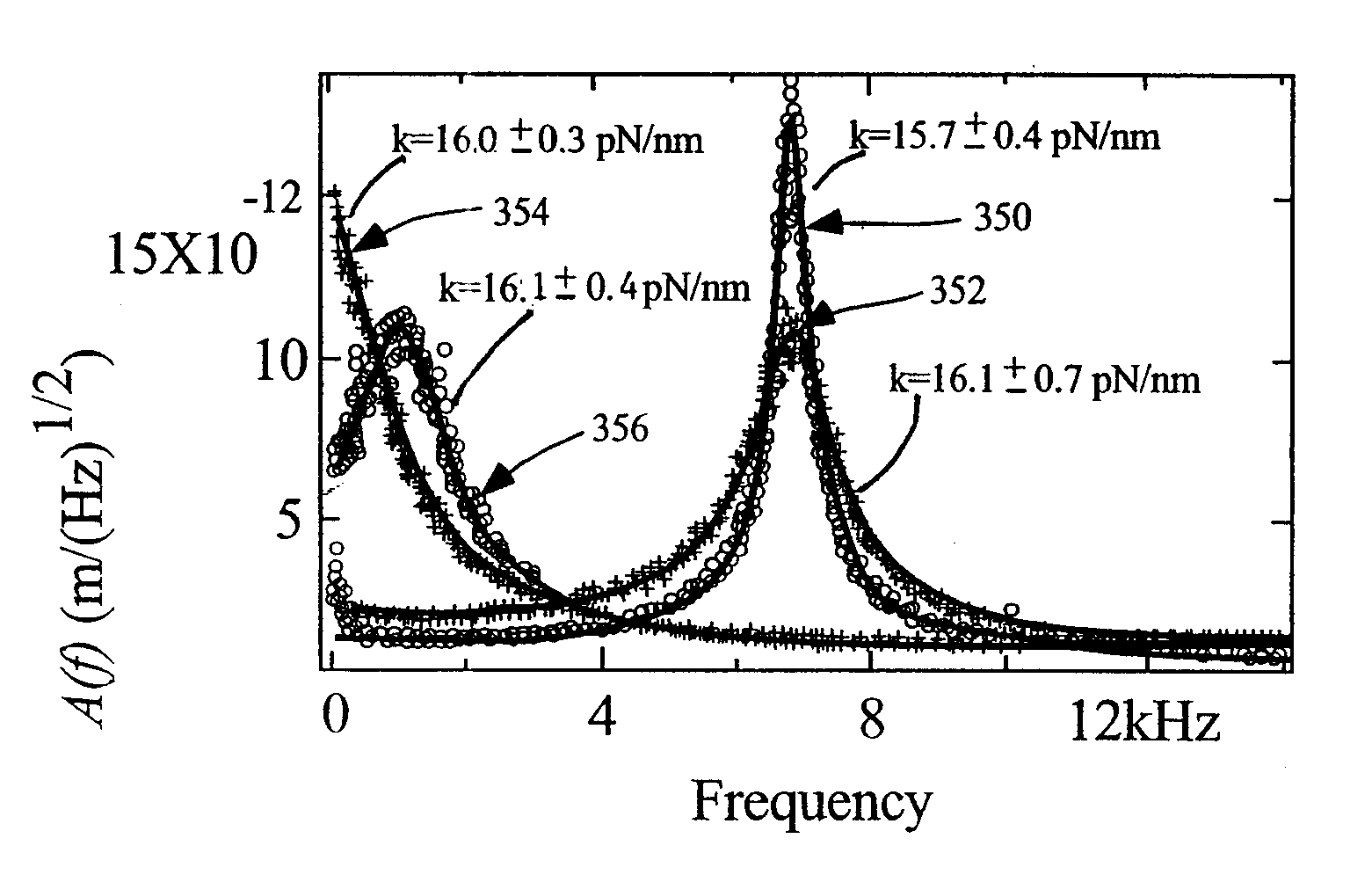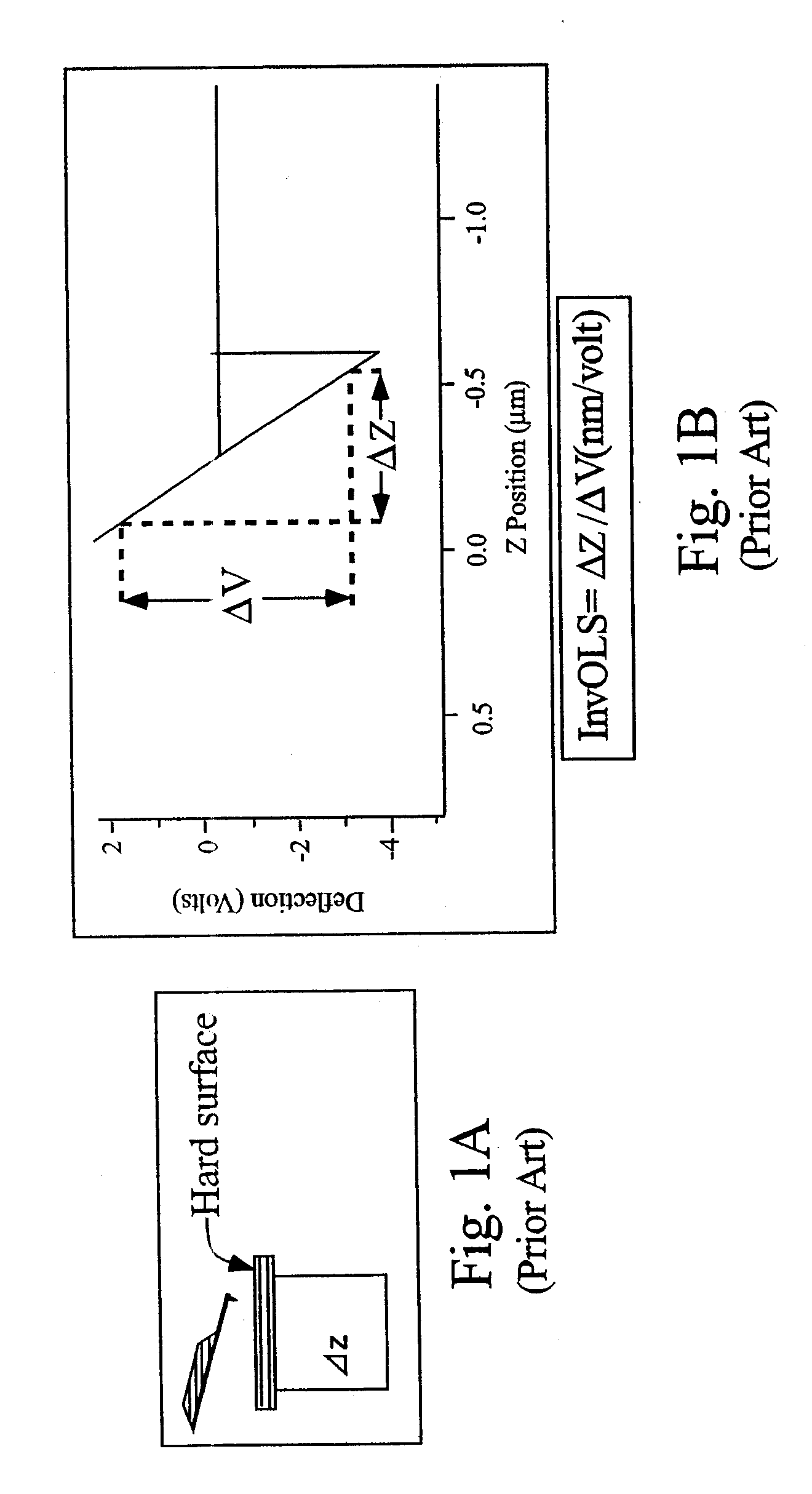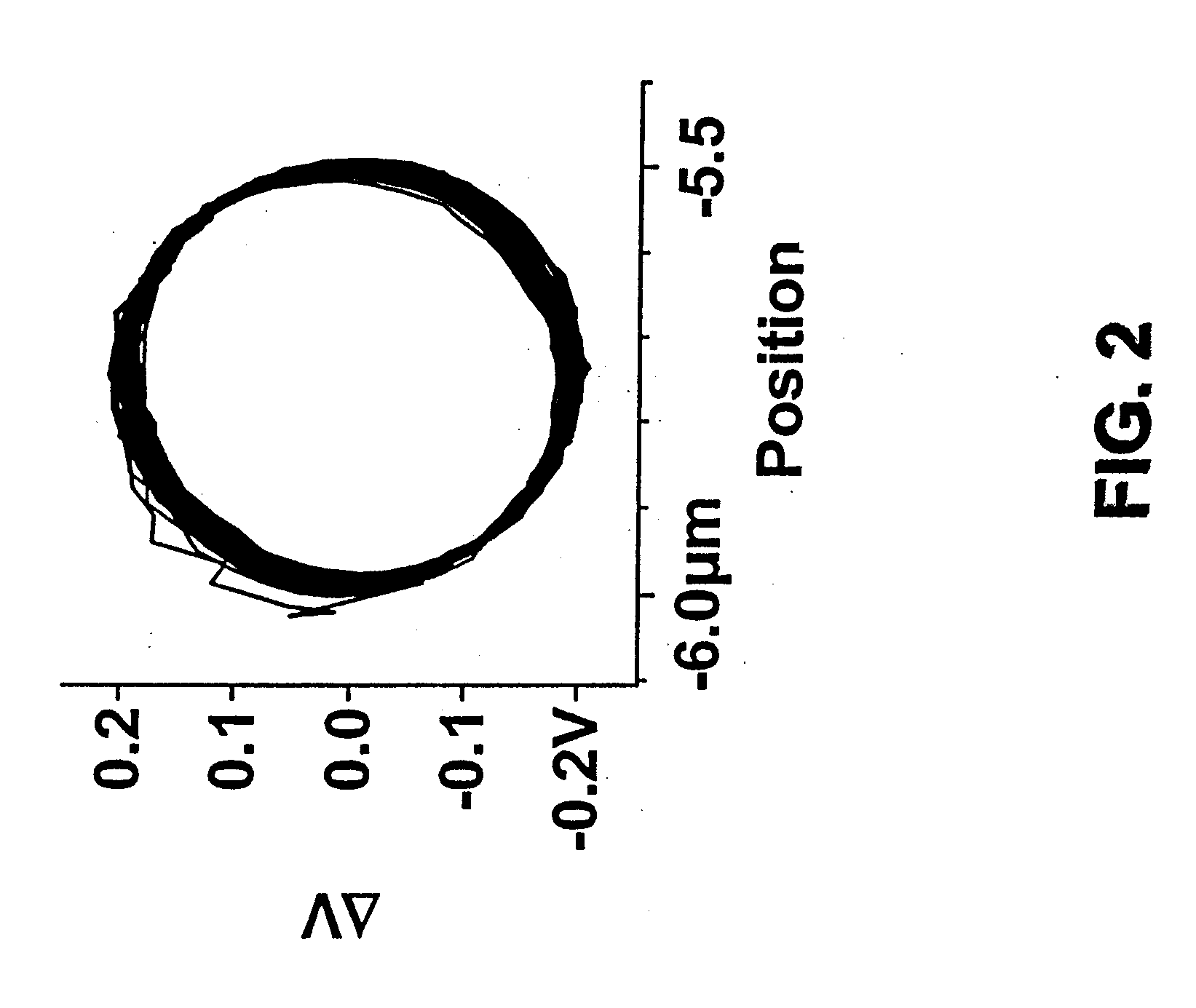Noncontact Sensitivity and Compliance Calibration Method for Cantilever-Based Instruments
- Summary
- Abstract
- Description
- Claims
- Application Information
AI Technical Summary
Benefits of technology
Problems solved by technology
Method used
Image
Examples
Embodiment Construction
[0027]FIG. 9 shows a cantilever-based instrument 900, such as an atomic force microscope (AFM), which operates by placing a sharp tip 902 attached to a bendable cantilever 904 directly on a surface 906 and then scanning the surface laterally using a sample positioner 914 directed by a controller 916. The bending of the cantilever 904 in response to surface height variations of the surface 906 is monitored by a detector 908. Typically, the height of the fixed end of the cantilever relative to the surface 906 of the sample 910 is adjusted with feedback to maintain the bending of the cantilever 904 at a predetermined amount during lateral scanning. The adjustment amount versus lateral position creates a map of the surface 906. The deflection detection system typically uses an optical beam, produced by a light source 912, and a detector 908. Using very small microfabricated cantilevers and piezoelectric positioners as lateral and vertical scanners, AFM's can have resolution down to mole...
PUM
 Login to View More
Login to View More Abstract
Description
Claims
Application Information
 Login to View More
Login to View More - R&D
- Intellectual Property
- Life Sciences
- Materials
- Tech Scout
- Unparalleled Data Quality
- Higher Quality Content
- 60% Fewer Hallucinations
Browse by: Latest US Patents, China's latest patents, Technical Efficacy Thesaurus, Application Domain, Technology Topic, Popular Technical Reports.
© 2025 PatSnap. All rights reserved.Legal|Privacy policy|Modern Slavery Act Transparency Statement|Sitemap|About US| Contact US: help@patsnap.com



